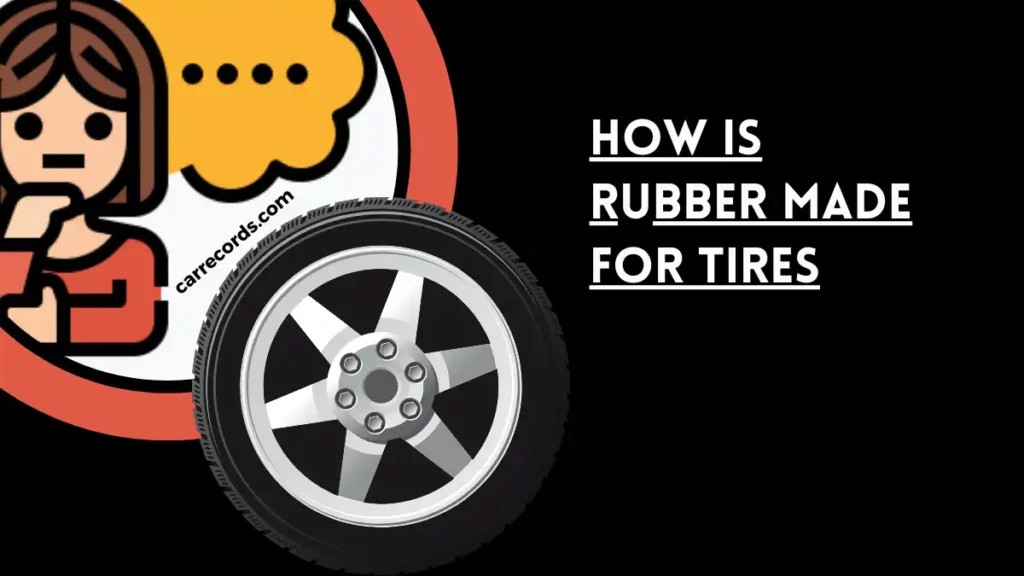✔️ how is rubber made for tires ?
Rubber for tire manufacturing is derived from liquid latex mixed with solidifying acids. The resulting rubber sheets undergo pressing, drying in smokehouses, and are eventually formed into bales. These bales are then shipped to tire factories worldwide.
Tires are an essential component of vehicles, providing the crucial connection between a vehicle and the road. The process of making tires involves a combination of science, engineering, and technology to create a product that is safe, durable, and capable of handling various road conditions. At the heart of tire manufacturing is rubber, both natural and synthetic, along with a blend of other materials that contribute to the tire’s performance.
Raw Materials – The Foundation of Tire Rubber
Rubber, the primary material used in tire production, comes in two main forms: natural rubber and synthetic rubber. Natural rubber is sourced from the latex of the rubber tree, Hevea Brasiliensis. This milky liquid is mixed with acids to solidify it. The resulting rubber is pressed into sheets, dried, baled, and then transported to tire factories. Synthetic rubber, on the other hand, is derived from polymers found in crude oil.
Carbon black, a fine powder produced from incomplete combustion of crude oil or natural gas, is another critical ingredient in tire rubber. It’s essential for tire strength and durability, with enormous quantities stored at tire factories. Chemicals like sulfur and additives are also incorporated into the rubber mixture to achieve specific tire characteristics, such as high friction for racing tires or longevity for passenger car tires.

Design – Building the Structure of a Tire
The design of a tire comprises the tread, body, sidewalls, and beads. The tread, the part in contact with the road, is carefully engineered for performance. Computer systems play a pivotal role in tire design, enabling engineers to simulate various design parameters and assess tire behavior under different stresses. This helps in refining the design before physical prototypes are produced, saving time and resources.
Tire design isn’t limited to tread patterns; it extends to the composition of rubber compounds used throughout the tire. Different parts of the tire may require distinct rubber formulations to optimize performance characteristics. This intricate interplay of design elements ensures that modern tires meet the diverse demands of today’s vehicles and road conditions.
Manufacturing Process – Transforming Raw Materials into Tires
The manufacturing process starts with mixing raw materials like rubber, carbon black, and chemicals to form a rubber compound. This compound is then sent to a tire-building machine, where skilled workers assemble layers of rubber to create a “green tire.” The tire-building process involves incorporating various components, such as fabric plies, beads, and sidewall and tread rubber layers, all while ensuring precise alignment and balance.
After assembly, the green tire is placed in a mold for curing. The mold contains a flexible balloon, and steam is pumped into the balloon to shape the tire against the mold’s interior. Curing imparts strength and stability to the tire structure. Quality control is paramount throughout the process, with raw materials and tire components rigorously tested to ensure consistency and performance.
Quality Control – Ensuring Performance and Safety
Quality control starts with the selection of reliable suppliers who provide certified raw materials. Batch mixing is closely monitored, with rubber samples tested for various properties. Tire assemblers are responsible for maintaining the integrity of tire components, and rigorous testing procedures, including destructive and nondestructive methods, are employed to identify any defects or flaws.
Feedback from consumers and tire dealers is also integrated into the quality control process, leading to continuous improvements in tire manufacturing. This holistic approach to quality control ensures that every tire leaving the factory meets stringent standards for performance, safety, and durability.
The Future of Tire Manufacturing: Innovations and Advancements
Tire manufacturing is a dynamic field, with constant advancements in rubber chemistry, design, and technology. Innovations are leading to tires with improved longevity and performance, capable of withstanding extreme weather conditions. Tread designs optimized through computer simulations offer better traction on wet and snowy roads, enhancing safety for drivers.
Moreover, non-pneumatic tires are being explored as a revolutionary concept. These tires, devoid of air pressure, offer benefits such as better fuel economy and reduced chances of punctures. As the tire industry continues to evolve, these innovations promise to reshape the landscape of tire technology and enhance the driving experience.
Conclusion
The intricate process of making rubber for tires encompasses a blend of science, engineering, and innovation. From sourcing raw materials to meticulous design and manufacturing, each step plays a crucial role in producing tires that meet the diverse demands of modern vehicles and road conditions. As tire technology continues to evolve, the future holds the promise of even more advanced and resilient tires, ensuring safer and more efficient journeys for drivers around the world.
source :Tire technology by F. J. Kovac, 1973, [s.n.] edition, in English – 4th ed.

